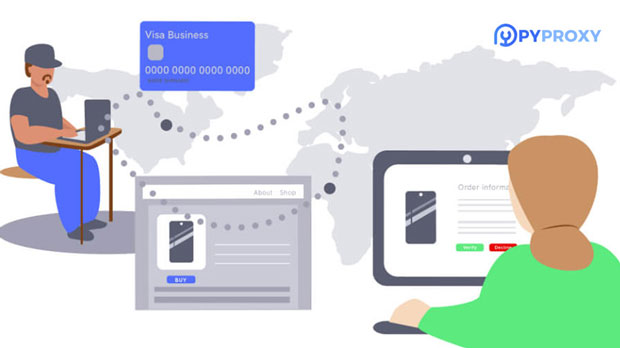When purchasing a socks5 proxy server, privacy and security should be your primary concerns. Proxy servers are often used to protect personal information while browsing the internet, but they can also become a potential vulnerability if not chosen carefully. Understanding the critical aspects of privacy protection in socks5 proxies is essential for safeguarding sensitive data, ensuring anonymity, and maintaining control over your online activities. This article will guide you through the important privacy considerations to keep in mind when selecting a socks5 proxy server. Understanding SOCKS5 Proxy Servers and Their Privacy BenefitsSOCKS5 proxies serve as intermediaries between your device and the websites or services you access online. They reroute your internet traffic through their own servers, masking your IP address and providing a layer of anonymity. SOCKS5 is one of the most popular proxy protocols due to its ability to support multiple types of internet traffic, including HTTP, FTP, and P2P, without the need for modification or filtering of the content.When it comes to privacy protection, the primary advantage of a SOCKS5 proxy lies in its ability to obfuscate your real IP address, making it harder for third parties to track your online activity. However, the level of privacy protection can vary greatly depending on the provider, configuration, and additional security measures.1. Data Logging Policies: Does the Provider Keep Logs of Your Activities?One of the most crucial aspects of privacy when using a SOCKS5 proxy server is the provider's data logging policies. Some proxy providers may keep logs of your online activities, including the websites you visit, the duration of your sessions, and your real IP address. If a provider keeps logs, your privacy could be compromised if those logs are ever accessed by authorities, hackers, or other third parties.When choosing a SOCKS5 proxy, always ensure that the provider has a strict "no-logs" policy. This means that they do not collect, store, or share any information regarding your online activities. A reliable provider will clearly state their data retention practices and offer transparency about the types of data they collect.2. Security Protocols: How Secure is the Connection?While SOCKS5 proxies do not inherently provide encryption, the security of the connection depends largely on the service provider. Without encryption, the data passing through the proxy server can be intercepted by malicious actors, potentially exposing sensitive information.Look for providers that offer additional security layers, such as VPN integration or SSL/TLS encryption, which can secure the connection between your device and the proxy server. A SOCKS5 proxy combined with a VPN, for instance, can offer a higher level of security by encrypting your entire internet traffic.3. Geographic Location of the Proxy Server: Is It Based in a Privacy-Friendly Jurisdiction?The geographic location of the proxy server is another important factor to consider when prioritizing privacy. Different countries have varying laws and regulations regarding data retention, surveillance, and privacy. If your SOCKS5 proxy provider is based in a country with stringent data retention laws or government surveillance programs, your data could be at risk.To ensure the highest level of privacy protection, opt for a provider located in a jurisdiction with strong privacy laws. Countries such as Switzerland or Iceland are known for their pro-privacy stances, while nations with mass surveillance programs or data retention laws, such as the United States or the UK, might pose a greater risk.4. Anonymity and IP Leaks: Does the Proxy Hide Your Real Identity Completely?Another important consideration when choosing a SOCKS5 proxy is whether the proxy effectively hides your identity and prevents IP or DNS leaks. Even if your SOCKS5 proxy hides your real IP address, your ISP or other third parties could still be able to track your activities if there are leaks in the system.A reliable SOCKS5 proxy should have mechanisms in place to prevent IP leaks, DNS leaks, and WebRTC leaks. These leaks can occur if your proxy server fails to handle certain types of traffic properly, revealing your real identity or location. It's important to test your proxy for these vulnerabilities before relying on it for anonymous browsing.5. Proxy Authentication: Is Your Proxy Account Secure?In some cases, SOCKS5 proxy servers require authentication through a username and password. While this adds an extra layer of security, it also means that you need to ensure the security of your proxy account credentials.Make sure the provider offers secure authentication methods, such as strong passwords and two-factor authentication (2FA), to protect your account from unauthorized access. Additionally, ensure that your own security practices are up to par, such as using a unique and complex password and enabling 2FA if available.6. Compatibility with Privacy Tools: Does the Proxy Work Well with Other Privacy Software?Many users who prioritize privacy also use additional tools such as VPNs, Tor, or privacy-focused browsers like Firefox or Brave. When purchasing a SOCKS5 proxy, consider whether it integrates seamlessly with these other privacy-enhancing tools.For instance, some SOCKS5 proxy providers offer support for connecting through a VPN, which can significantly enhance the security and privacy of your internet connection. Similarly, if you're using Tor, it's important to verify whether the SOCKS5 proxy works without compromising the anonymity that Tor provides.7. Customer Support and Privacy Assurance: Does the Provider Offer Adequate Support?Good customer support is another essential aspect of ensuring the privacy and security of your SOCKS5 proxy service. If you encounter any issues with the proxy, whether it's related to connection problems, security concerns, or privacy issues, having access to knowledgeable support personnel can help resolve these problems quickly.Make sure the proxy provider offers reliable customer support channels, such as email or live chat, and ensure that they have a good reputation for addressing privacy concerns promptly and effectively.8. Transparency and Reputation: How Trustworthy Is the Proxy Provider?Lastly, it's important to assess the transparency and reputation of the SOCKS5 proxy provider. A trustworthy provider should be transparent about its operations, including its logging policies, security measures, and jurisdiction. Look for reviews, testimonials, or third-party audits that can confirm the provider’s reliability and commitment to privacy.Avoid providers with a poor reputation or limited transparency, as these services may not offer the privacy protection you need and could expose your data to potential risks.Conclusion: Prioritize Privacy and Security in Your SOCKS5 Proxy SelectionWhen purchasing a SOCKS5 proxy server, privacy and security should be at the forefront of your decision-making process. By considering factors such as data logging policies, security protocols, geographical location, and IP leak protection, you can significantly reduce the risks associated with online privacy breaches. Additionally, ensure that the provider offers secure authentication, integrates well with other privacy tools, and provides reliable customer support. Ultimately, selecting a SOCKS5 proxy that aligns with your privacy goals will help you maintain anonymity and protect sensitive information while browsing the internet. Carefully vetting proxy providers, understanding the potential privacy risks, and choosing a trustworthy service can help you achieve the online privacy and security you need.
Jan 06, 2025
![arrow]()



























































